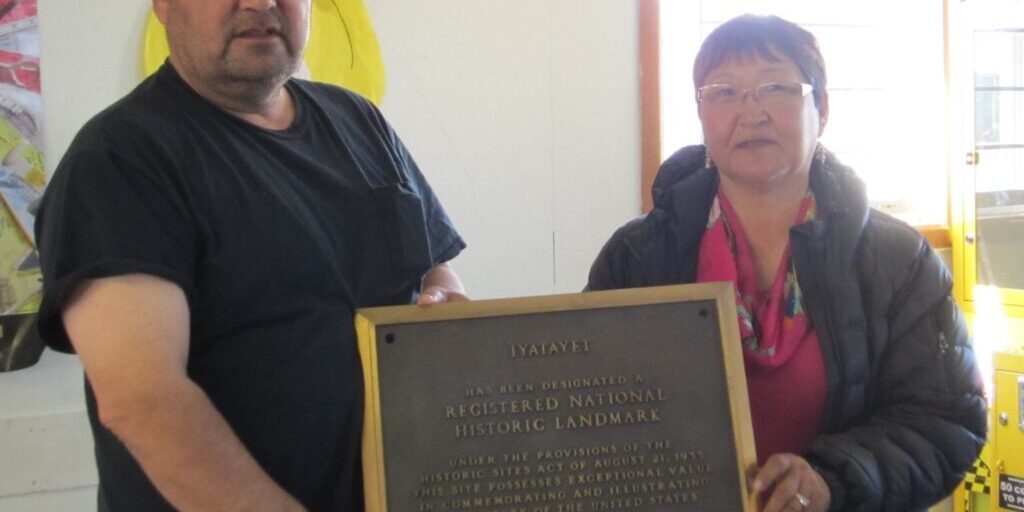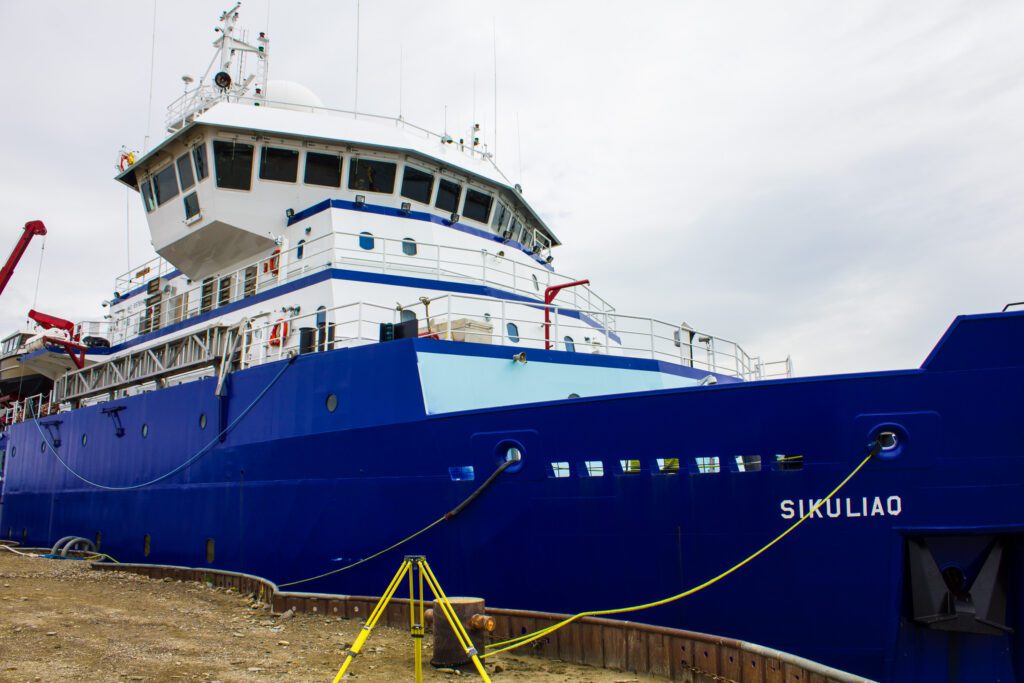The community of Shaktoolik is celebrating the return of a plaque designating a nearby ancient hunting camp as a National Historic Landmark.
Until the 1940s archeologists believed humans first crossed into Alaska only 2,000 years ago. But in 1948, archeologists unearthed a prehistoric campground found on a terrace near Shaktoolik with artifacts dating back 5,000 years. The site, called Iyatayet, was registered as a National Historic Landmark in 1964, and the community of Shaktoolik received a plaque marking the camp’s historical significance.
Years later the plaque disappeared. Recently, it was found in Fairbanks at the National Park Service office. On Tuesday, the National Park Service returned the plaque to the community.
Jeanette Koelsch, Superintendent of Bering Land Bridge National Preserve, said at the ceremony in Shaktoolik that “the plaque commemorates the fact that [Iyatayet] is an important archeological site in United States history, as well as the village.”
Koelsch officially handed the plaque to the Shaktoolik Native Corporation at the Tuesday ceremony.
The plaque will be housed in the Shaktoolik school in a glass cabinet filled with artifacts from the Iyatayet site. The school received boxes of the artifacts in February from California State University in Monterey Bay. Teresa Perry is President of the Shaktoolik IRA. She said her grandfather helped excavate the site in the 1940’s.
And explaining the significance of the artifacts, Perry said, “Our kids some day will be our leaders, and it really raised their spirits up when we put the display of the artifacts in the glass. They were very proud and indicated that, ‘Wow, we have museum in the school.’ And the artifacts bring pride to our families.”
The artifacts include spearheads, spear stems, and ivory carvings. More artifacts exist at the Iyatayet site. But like Shaktoolik itself, the site is washing away.
Perry said she traveled to the site about a month ago and said she observed “ about 15 feet of erosion everywhere.” That erosion, Perry said, is from a severe fall storm last November.
Shelby Anderson is an Assistant Professor at Portland State University and an archeologist working with the National Parks Service. Anderson attributes the erosion to climate change.
“Climate change,” Anderson said, “impacts so many things in different ways, but one thing that makes archeological sites really vulnerable is that they’re part of the landscape. You can’t move an archeological site, and they’re really hard to protect from large natural processes like erosion or permafrost thawing. There’s no way to do that. And then you can’t replicate the site.”
Anderson plans to return to the site next summer to document how natural and human forces are shaping the area and to create recommendations on how to preserve what remains.








